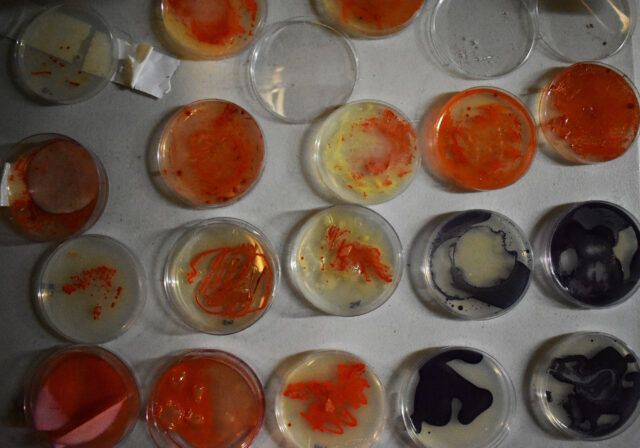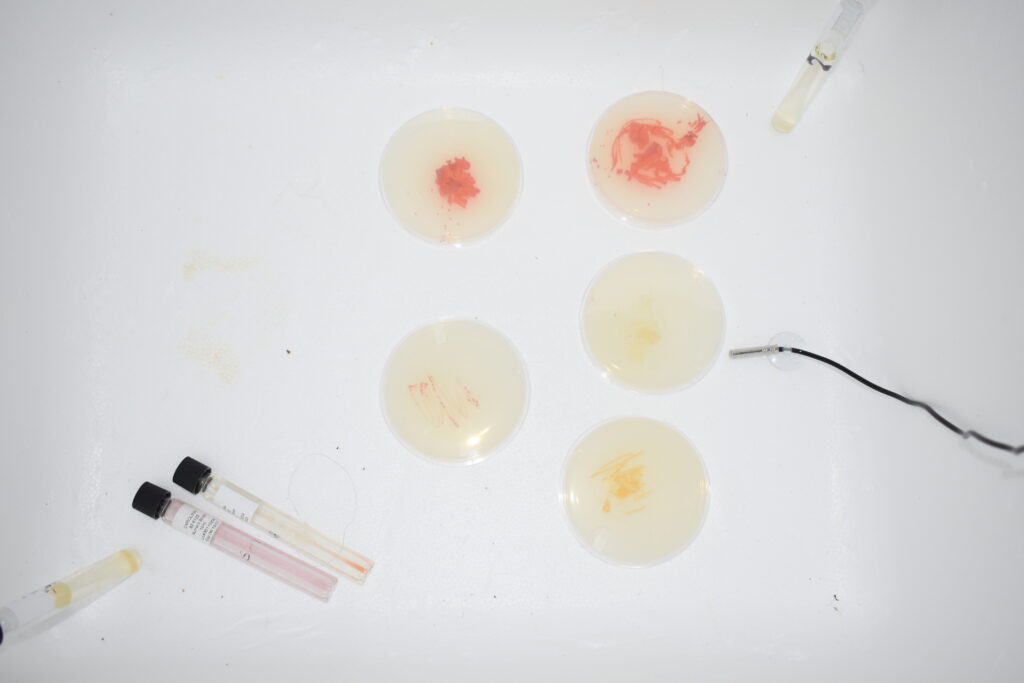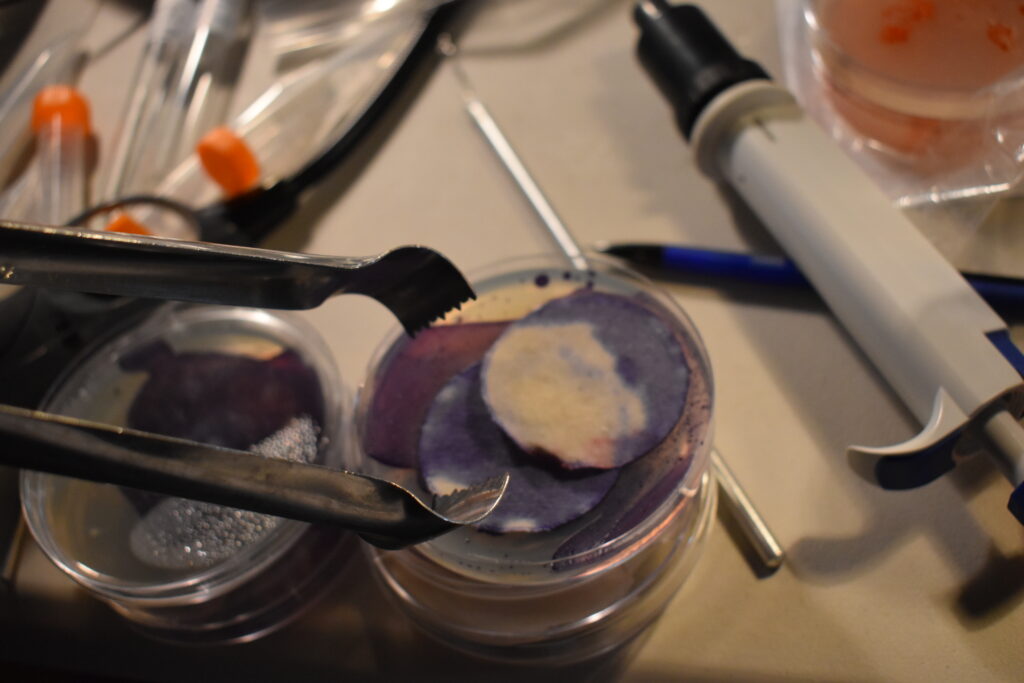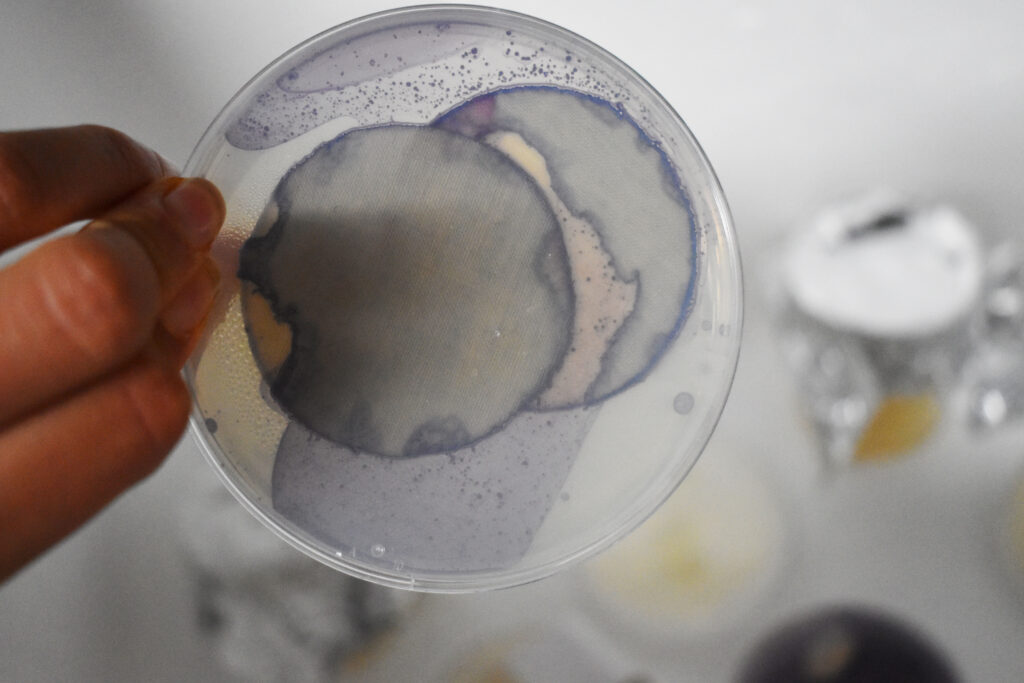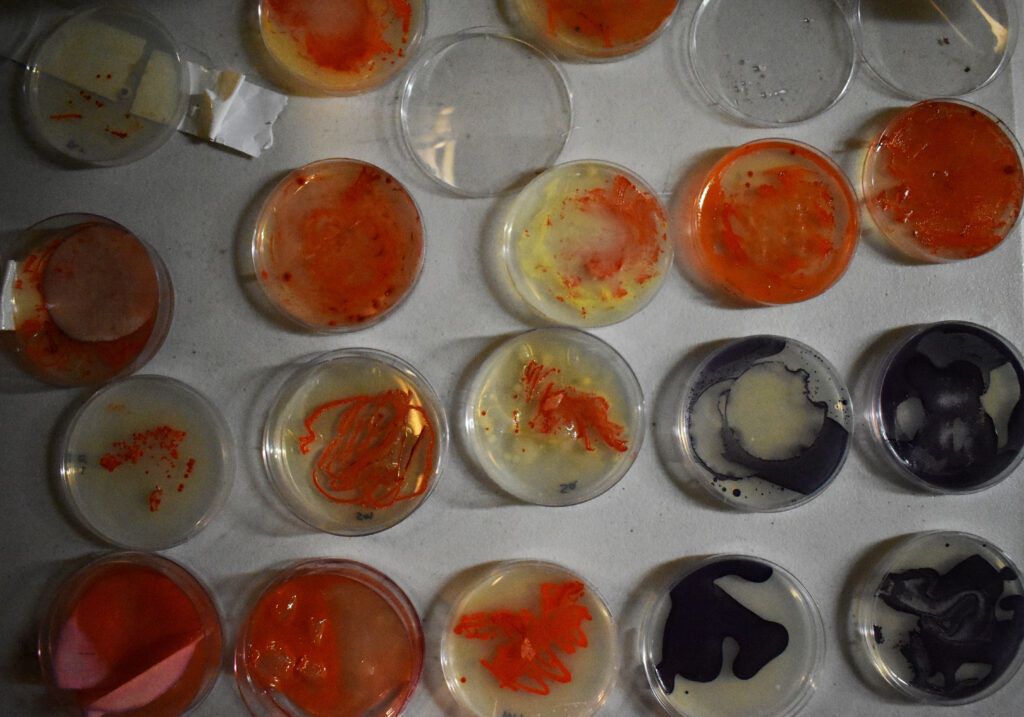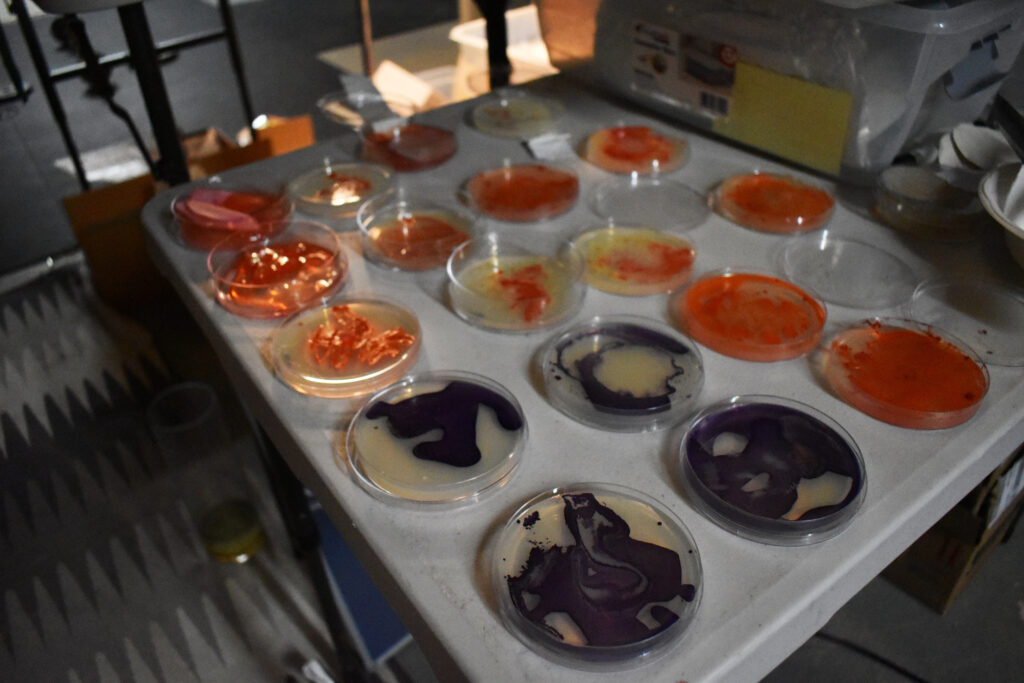The invisible microbial world of bacteria hosts a large range of functions that are vital for all life forms, yet microbe’s recognition as pathogenic remains pervasive. Microbes are killed in pursuit of “sterility.” By neglecting microbes, means neglecting whole ecosystems who rely on bacteria for transferring nutrients, communicating, signaling stressors.
What is an effective means of communication of the beauty and acceptance of microbes? When researching the world of bacteria, I couldn’t help but notice the beautiful colored colonies of bacteria. Certain bacteria like chromobacterium vioaclum, Micrococcus luteus, Rhodococcus rhodochrous (pink), Sarcina aurantiaca (orange-yellow), and Serratia marcescens, utilize different enzymes to secrete certain pigments like orange, yellow, pinks, reds, and purples, when in the presence of a food source rich in nitrogen compounds, long-chained fatty acids, carbohydrates, vitamins, and essential amino acids ((yes bacteria love carbs and sugars!)
But what is causing these pigments in bacteria? What can we learn from these pigments? And how we can introduce them into human’s daily life?
Curious about the biochemical behavior of bacteria, I discovered that these pigments are regulated through a phenomenon known as quorum sensing. Quorum sensing use signaling molecules, or autoinducers as a form of communication. such as as bacteriochlorophylls, carotenoids, flavins, indigoids, melanins, pheomelanin, monascins,s, violacein, β-carotene.
Chromobacterium violaceum for example, is an interesting bacteria in that, instead of producing colored small bacterial colonies, it forms large dark purple “stains.” through quorum sensing where the bacteria detects and responds to changes in cell population density upon changes in its environment.
Pigmented Bacteria are not rare, novelty bacteria, rather they are typical soil and aquatic bacteria. Oftentimes these bacteria can actually grow in quite unfavorable environmental conditions once stimulated with various carbon, nitrogen, and additional media nutrient amendments. The Pink halobacterium, a staple in the diet of the brine shrimp and responsible for the Flamingo’s pink color, favors high salt environments where normally bacteria wouldn’t be able to survive.
Similarly, “Pigments found in marine plants, invertebrates, and vertebrates such as seagrass, sponges, corals, mollusks, and tunicates are indeed produced by the bacteria they consume. “Some of the compounds such as tambajamine, a yellow pigment molecule isolated from sponges and bryozoans, are believed to originate from endobiotic or epibiotic Pseudoalteromonas Pigments isolated from bryozoans (Bugula dentata and Sessibugula translucens), nudibranchs, and ascidians (Atapozoa sp.) have been found to be produced by bacteria Streptomyces sp., Pseudoalteromonas tunicate, and Serratia marcescens” (https://www.ncbi.nlm.nih.gov/pmc/articles/PMC6680428/)
Bacteria and their pigment Inducing capabilities are not just a form of communication but are indicators of compatibility, and of multispecies living. Bacterial pigmentation is a result of an autopoietic system, one that is organized to continuously reproduce its own parts and structure as described by famed biologists Humberto Maturana and Francisco Varela.
As an environmental designer, my role is to design and cultivate compatibility with nature. How can compatible bacterial pigments replace then incompatible, the toxic pigments? Bacterial Pigments offer promising opportunities in replacing carcinogenic, and toxic synthetic dyes. The synthesis of dyes and pigments used in textiles and other industries generate the hazardous wastes that pose a threat to humans, plants, and animals alike. As said in “To Dye For: Textile Processing’s Global Impact” “At best, contact with dyed synthetics triggers allergic reactions, skin irritation, and rashes. At worst, it increases the risk of cancer….Cotton fibers for example, are mainly dyed using azo dyes which are one of the largest groups of synthetic colorants used in the industry (account for 60-70% of the dye industry). Azo dyes do not dissipate, are difficult to degrade by the current conventional treatment processes, and end up leaching into soil and waterways damaging important soil bacteria needed to maintain agricultural productivity. It was observed that the toxic nature of dyes causes death to the soil microorganisms which in turn affects agricultural productivity.”
I chose to explore bacterial pigmentation in my home biolab. I experimented growing a series of bacteria including chromobacterium vioaclum, Micrococcus luteus, Rhodococcus rhodochrous (pink), Sarcina aurantiaca (orange-yellow), and Serratia marcescens, on growing medium known as nutrient agar which is a medium comprised of beef extract, agar (red seaweed), and peptones and in pursuit of seeing colored colonies form. I placed sterilized wasted cotton scraps and inoculated it on the agar plate medium. I dosed the wasted cotton scraps in nutrient broth (same thing as nutrient agar except in liquid form without the gelling agent) to stimulate the bacteria to grow on the agar fabric. What is interesting is that, because bacteria is living, it self regenerates and continues to produce pigments even when it has been swabbed, and disturbed (I aggressively pressed the sterilized fabric in the bacteria). In addition, the only need for water processing was the sterilization of the metal swabber and flasks. Compared to synthetic and natural dying which require large amounts of energy and water usage, bacteria has the potential to dramatically upend modes of industrial processing of dyes while simultaneously reconnect us to our essential microbial world.
